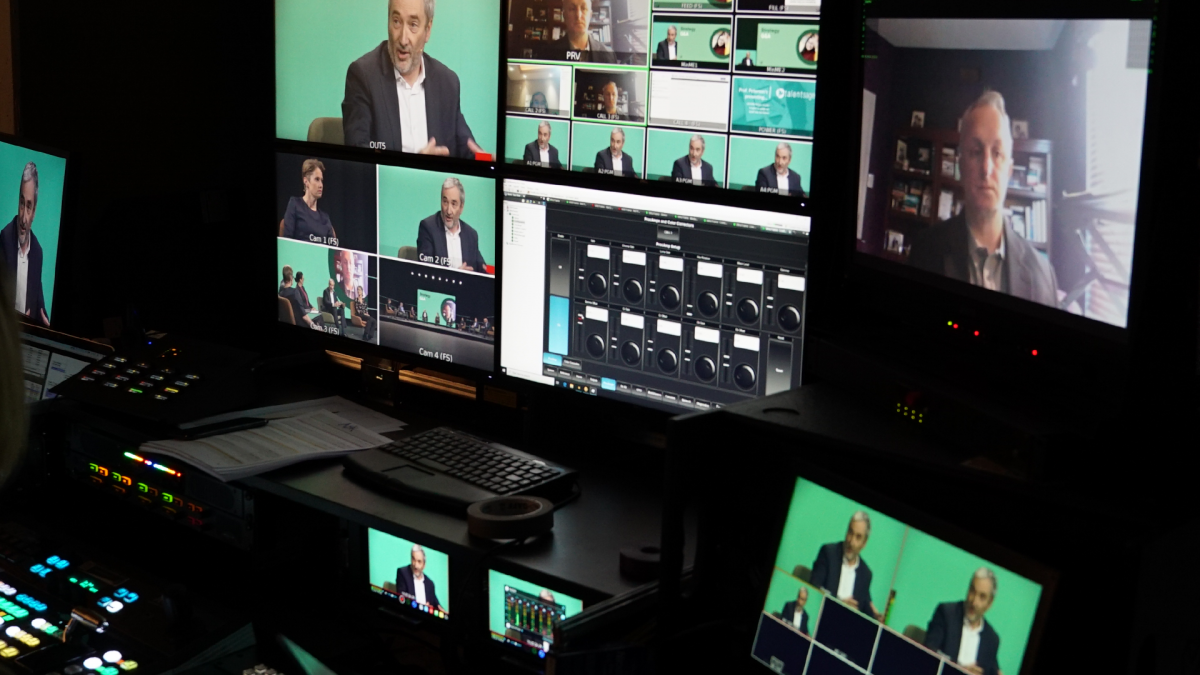This article is co-written by Malene Kingo, Global Head of Change Enablement at LEO Pharma, and Ask Agger, CEO at Workz.
The organisation’s heartbeat
In many companies, the leadership summit is the yearly organisational heartbeat - senior management convene for one or two intensive days and, ideally, leave energized by networking and keynotes while inspiration and ideas are circulated among participants. This is the not-to-miss gathering where we as leaders strive to create strategic alignments, a sense of purpose and shared commitment.
Within executive management, the preparation of the summit presents an important deadline which can be very helpful in prompting decisions for the year to come. If designed and executed well, the yearly summit gives a substantial boost to the company’s ability to execute and deliver on new strategies and initiatives.
Do we postpone or do we go virtual?
The COVID 19 pandemic has forced companies to reconsider plans – should we postpone or cancel the leadership summit, or can we go virtual? In a time of crisis and uncertainty, many organisations are tempted by the first option because it saves time and money. It may seem the obvious choice, but we urge you to reconsider and give the prospect of a virtual summit a second thought.
We believe that it is precisely during turbulent times that the benefits of a leadership summit are most needed - we need a clear direction, we need our leaders to be aligned on priorities and new ways of working, we need a strong sense of community and purpose and we need to strengthen trust, relationships and commitment. Even the best of webinars or internal newsletters fall short when it comes to these organisational needs.
Overlooked benefits
Some things are more difficult when colleagues meet virtually instead of face-to-face, but rethinking the traditional summit has many benefits. The most obvious is saving cost and time on travel but based on our experience, there are several other overlooked advantages if we dare to embrace the virtual opportunities.
- A faster heartbeat
We must ask ourselves, does the frequency of a single yearly ‘heartbeat’ match the planning horizon and pace of change in our organisation? We will argue that in most industries and companies, there is a need for our managers to touch base and align more often. Being less costly and faster to organise, virtual leadership summits can be run several times a year to ensure a ‘faster heartbeat’. This can help the organisation thrive while responding to internal and external change.
- Better responsiveness
Engaging participants in co-creation, brainstorms, knowledge sharing etc. can be highly beneficial, but it can be difficult to efficiently use and respond to the valuable input given at traditional summits. Many of us are familiar with the unsatisfying feeling of ending an engaging workshop with a wall of post-it notes that nobody reads afterwards. Going virtual allows for a much higher degree of real responsiveness to ideas and input from participants – perhaps the content of the second day of the summit is tailormade overnight based on the participants’ input from the first day? Or how about a process where the executive teams have ample time during the summit to discuss new ideas and make decisions that the CEO can present in her concluding keynote? Designing for responsiveness can ensure that valuable insights are harvested and shared.
- A customised experience
Most traditional summits are designed as a ‘one-size-fits-all’ solution without much concern for the interests and needs of the individual participant. This is a limitation as the implications of new strategies or other major transformations varies significantly across business functions – some participants might need to discuss how the new strategy will impact branding and value proposition, while others spend their time best working with the implications for innovation or business development. A virtual summit offers a variety of ways to customise the experience for each participant, including knowledge sharing in virtual peer groups based on individual preferences.
- Flexible participation
Traditional summits tend to have a fixed approach to participation – only selected people are invited and if you participate, you are committed to the full program. Going virtual enables us to break free from these constraints – perhaps some content would be relevant for a broader audience? Should we invite all mid-level managers to join the final keynote by the CEO? Or we can consider involving colleagues or external stakeholders for selected sessions and leverage their perspectives to add special value – perhaps front-line sales reps should be involved in a workshop about the commercial execution of the new strategy? Flexible participation can help us involve the right people at the right time.
- From event to journey
A typical pitfall when organising summits is that we end up creating isolated events with limited integration with business activities prior to or following the event. Going virtual makes it easier to convert the traditional stand-alone summit into a prolonged journey with participant engagement along a string of touchpoints – perhaps a mix of short, live-broadcasted plenary sessions, home assignments and reflection in virtual learning teams. It is well documented that learning and retention of new knowledge has greater impact when there are several touchpoints. In this way, by challenging the format, we can create a user journey, not just an event.
A future of blended opportunities
We are big fans of physical meetings where we can engage directly with colleagues, but we are also highly inspired by the potential of challenging the conventions and constraints of traditional summit design. In a future where the adaptivity and responsiveness of organisations will become more and more essential, we see a need for fresh approaches to leadership engagement and strategy execution where we blend the best of virtual and physical involvement. From our point of view, the biggest constraint will be our own habits and conventional thinking.


